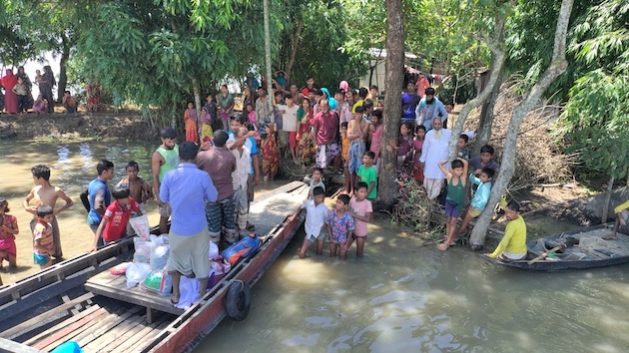Better Mapping of Erosion Risk Areas Needed More Than Ever — Global Issues
KIGALI, May 19 (IPS) – Following severe flooding and landslides that hit major parts of Rwanda earlier this month, experts are convinced that investing in the mapping of erosion risk areas could go a long way to keeping the number of casualties down.
Many villagers living along major rivers in Western Rwanda have been among the victims of river erosion and flooding every year.
Felicita Mukamusoni, a river erosion survivor in Nyundo, a mountainous village from Western Rwanda, told IPS that “parts of this village have been eroded to such an extent that we cannot even imagine.”
“I reared cows and goats. My beautiful house was destroyed. The river has taken everything,” she said.
Latest Government estimates indicate that at least 135 people died, and one is still missing following recent flooding and landslides triggered by heavy rains that hit western, northern and southern provinces earlier this month.
In a recent assessment, experts found that land in high-risk areas is mainly used for agriculture, and 61 percent was for seasonal crops. It said that seasonal agriculture exposes soil to splash erosion and further detachment as land is not permanently covered.
The 2022 report on the State of Soil Erosion Control in Rwanda indicates that the erosion control techniques across high-risk areas in Rwanda are still very low.
Erosion control mapping shows that of the 30 districts of Rwanda, land under high erosion risk is about 1,080,168 hectares (45 percent of the total provinces land, which is estimated to be 2,385,830 hectares) of which 71,941 hectares (7 percent of the total risk areas) are at extremely high risk.
According to the same report, at least 190,433 hectares of land are considered very high risk (18 percent), 300,805 hectares are at high risk (28 percent), and 516,999 hectares (48 percent) are at moderate risk.
Dr Charles Karangwa, a climate expert based in Kigali, told IPS that It is unfortunate that fresh disasters happened again despite a lot of investment in the past.
“Rwanda needs to explore other complementary solutions such as water management infrastructure, water harvesting, and where possible, relocate those living in highly risky areas to allow nature to regenerate will help to stabilise the situation both in the long term and medium term,” he said.
Apart from being highly populated, Karangwa pointed out that there is quite a link with geographical vulnerability because of soil erosion risk, which is worsened by high population, and this increased pressure on land.
Flood Management and Water Storage Development Division Manager at Rwanda’s Water Resources Board (RWB), Davis Bugingo, told IPS that among solutions to cope with recurrent disasters in Western Rwanda is the establishment of flood control infrastructures to regulate water flow and reduce flooding risks.
These include the construction of the neighbouring Sebeya retention dam, and Gisunyu gully rehabilitation works expected to significantly contribute to reducing flood impacts in the region.
While accurate and up-to-date data on river flow, topography, and flood vulnerability remains crucial for effective flood management, Bugingo observed that limited data availability and quality could pose challenges in accurate flood forecasting, risk assessment, and planning.
Apart from land use, which contributed to increased flood risks, experts observed that constructions in flood-prone areas, encroachments on riverbanks, and inadequate zoning regulations had exacerbated the impact of floods and hindered effective flood management efforts in western Rwanda.
Most recently, RWB has developed a dedicated application to collect more information to inform future analysis, relocation of people living in risky areas, and adjusting tools used to design flood control infrastructure.
The above tool provides information on flood exposure and areas at risk that can be visualised in 3D and shared the information with the public or other organisations. However, experts are convinced that despite these innovative solutions, limited financial resources may hinder the implementation of these large-scale infrastructure projects, such as dams, flood control structures, gully reclamation and drainage systems.
Rwanda is one of Africa’s most densely populated countries, with large concentrations in the central regions and along the shore of Lake Kivu in the west. This East African country’s total area is 26,338 km2, with a population of 13,246,394.
Bugingo points out that inadequate land use still contributes to increased flood risks.
“Constructions in flood-prone areas, encroachments on riverbanks, and inadequate zoning regulations continue to exacerbate the impact of floods and hinder effective flood management efforts,” he said.
IPS UN Bureau Report
Follow @IPSNewsUNBureau
Follow IPS News UN Bureau on Instagram
© Inter Press Service (2023) — All Rights ReservedOriginal source: Inter Press Service
Check out our Latest News and Follow us at Facebook
Original Source







